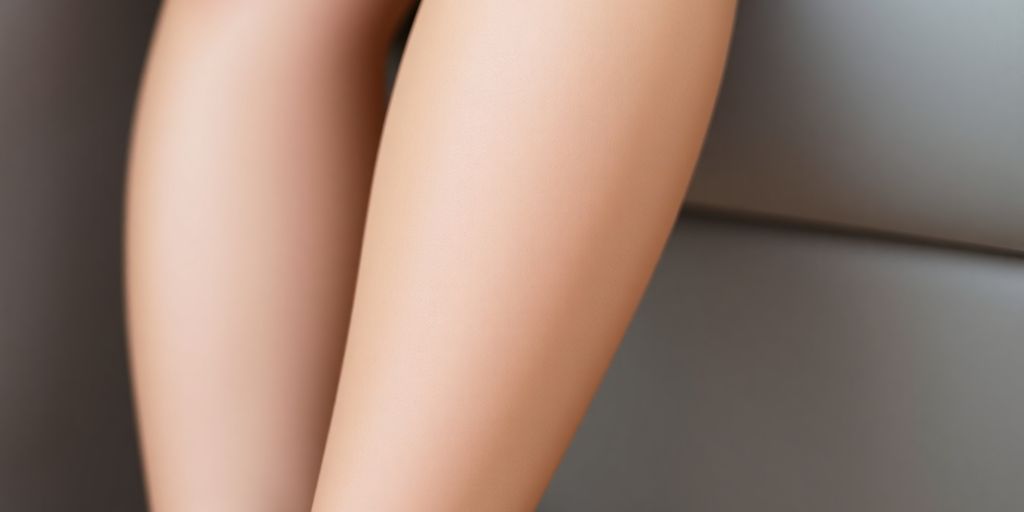Overview: 20-30 mmHg Compression Level
20-30 mmHg compression is the first level of medical-grade compression therapy. This firm compression level delivers therapeutic benefits for varicose veins, moderate swelling, and circulation issues while remaining comfortable enough for daily wear.
|
Feature |
Detail |
|
Compression Level |
Firm (Medical Class I) |
|
Pressure Range |
30 mmHg at ankle, 20 mmHg at calf |
|
Prescription Required |
Generally, no, but doctor guidance is recommended |
|
Common Uses |
Varicose veins, moderate edema, DVT prevention |
|
Ideal For |
Nurses, travelers, athletes, pregnant women |
|
Top Brands |
Medi (Mediven), Jobst, Juzo |
What Does 20-30 mmHg Compression Mean?
The 20-30 mmHg meaning refers to pressure measurement in millimeters of mercury—the same unit used for blood pressure readings. In graduated compression garments, the higher number (30 mmHg) indicates pressure at the ankle, while the lower number (20 mmHg) represents pressure at the calf or thigh. This graduated design pushes blood upward toward your heart, improving circulation.
20-30 mmHg Compression Level: Firm vs. Moderate
|
Level |
Compression |
Best For |
|
Mild |
8-15 mmHg |
Daily energizing, minor fatigue |
|
Moderate |
15-20 mmHg |
Prevention, mild swelling, travel |
|
Firm |
20-30 mmHg |
Varicose veins, edema, medical conditions |
|
Extra Firm |
30-40 mmHg |
Severe conditions, post-surgical (prescription) |

Benefits of 20-30 mmHg Compression Stockings
The benefits of 20-30 mmHg compression stockings extend beyond comfort. This medical-grade level provides measurable therapeutic effects while supporting healthy circulation during demanding activities.
Conditions Treated by 20-30 mmHg Compression
Healthcare providers frequently recommend this compression level for various venous conditions. 20-30 mmHg compression socks for varicose veins help reduce visible bulging, alleviate heaviness, and slow disease progression. Similarly, 20-30 mmHg compression for edema and swelling provides the firm support necessary to control moderate fluid accumulation.
Additional conditions addressed include chronic venous insufficiency, spider vein prevention, post-sclerotherapy recovery, and DVT prevention for at-risk individuals.
15-20 mmHg vs 20-30 mmHg Compression Difference
The 15-20 mmHg vs 20-30 mmHg compression difference primarily comes down to therapeutic intensity:
1. Choose 15-20 mmHg if you: need preventive support without diagnosed conditions or experience only occasional, mild leg tiredness.
2. Choose 20-30 mmHg if you: have visible varicose or spider veins, experience daily swelling, need post-surgical support, or stand for extended periods regularly.
Is 20-30 mmHg Compression Considered Medical Grade?
Yes, 20-30 mmHg compression is considered medical grade—classified as Medical Class I compression. Medical-grade compression garments from trusted brands undergo rigorous testing to ensure consistent, accurate pressure delivery.
Medical Grade Compression Brands To Consider
- Juzo — great selection of both men's and women's leggings and pantyhose
- Jobst — wide selection of basic colors for leg compression garments
- Medi — high-end quality compression products
Do You Need a Prescription for 20-30 mmHg Compression Socks?
You generally do not need a prescription for 20-30 mmHg compression socks. However, consulting a healthcare provider is advisable, especially with diabetes or peripheral artery disease. Medical professionals can help select appropriate styles—whether men's thigh-high compression stockings, women's compression leggings, or knee-high compression socks.
How to Measure for 20-30 mmHg Compression Stockings
Proper sizing ensures therapeutic effectiveness. Measure first thing in the morning before any swelling occurs:
-
Ankle circumference – Measure at the narrowest point above the ankle bone
-
Calf circumference – Measure at the widest point of the calf muscle
-
Leg length – Measure from floor to knee bend (knee-high) or to gluteal fold (thigh-high)
Manufacturers, including Mediven, Jobst, and Juzo provide detailed sizing charts specific to their product lines. We also offer complete compression guides with donning tips, videos, and how to measure.
Wearing Guidelines and Safety Considerations
How Long Should You Wear 20-30 mmHg Compression Socks?
Most people wear 20-30 mmHg compression throughout waking hours—typically 8 to 12 hours daily. Put them on first thing in the morning and remove them before bed. Consistency delivers the best results for managing varicose veins, edema, or preventing DVT.
Can I Wear 20-30 mmHg Compression Socks While Sleeping?
Generally, no, compression socks are designed for daytime wear. Wearing them overnight can restrict circulation when your legs are elevated. Only wear compression during sleep if specifically prescribed by your doctor.
Side Effects of Wearing 20-30 mmHg Compression Socks
When properly fitted, 20-30 mmHg compression socks rarely cause problems. However, incorrect sizing may result in numbness, tingling, skin irritation, or increased swelling. Certain conditions, including peripheral artery disease and uncontrolled heart failure, may contraindicate compression therapy entirely.
Practical Applications
20-30 mmHg Compression Socks for Air Travel
Long flights present significant DVT risks due to prolonged immobility. 20-30 mmHg compression socks for air travel actively promote circulation, reducing blood clot likelihood and minimizing leg fatigue and swelling. Wear your compression garments throughout the flight.
Athletic and Occupational Use
For demanding activities, firm support is crucial. Active individuals can use athletic compression socks to enhance muscle support and faster recovery. Retail employees and healthcare workers can reduce end-of-day fatigue with both men's compression bottoms and women's compression leggings in 20-30 mmHg.
Frequently Asked Questions
1. Who benefits the most from a 20-30 mmHg compression level?
A firm compression level (20-30mmHg) is best suited for people with physically demanding routines. Athletes, nurses, and pregnant women are among the individuals who benefit significantly from this level of compression therapy.
2. Is 20-30 mmHg compression considered medical grade?
Yes, 20-30 mmHg qualifies as Medical Class I compression—the first tier of therapeutic-grade support.
3. How long should you wear 20-30 mmHg compression socks?
Most individuals wear them during waking hours (8-12 hours), removing them before sleep unless medically directed.
4. What's the difference between 15-20 mmHg and 20-30 mmHg compression?
15-20 mmHg suits prevention and mild symptoms, while 20-30 mmHg addresses diagnosed conditions like varicose veins and moderate edema.



Share:
Compression Socks for Flying: Essential Guide to Comfort & Health
Compression Socks for Flying: Essential Guide to Comfort & Health